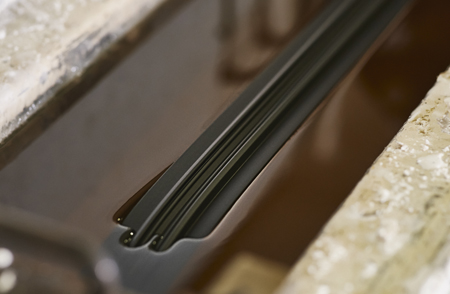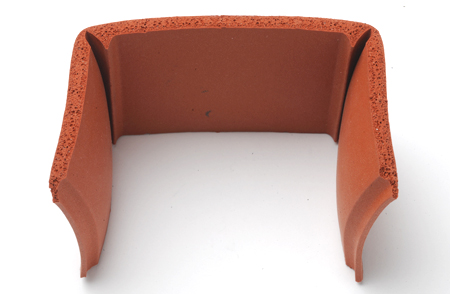Open-Cell Vs Closed-Cell Rubber
Open-Cell Vs Closed-Cell Rubber
A key benefit of closed-cell sponge rubber is its ability to resist water absorption. Here's a closer look at how it works:
Sponge rubber is extruded by including a gas-forming ingredient (blowing agent) in the rubber formulation.
As the rubber passes through heating zones in the cure system, it reaches a temperature at which the blowing agent decomposes and gas bubbles form, creating individual cell structures in the rubber.

On this extrusion line, the rubber is cured as it passes through a high-temperature salt bath.
Material Qualities
Cooper Standard ISG specializes in closed-cell sponge rubber products. This material consists of enclosed cells independent from other cells, each with its own structure.
Closed-cell rubber doesn't let fluids seep in and stays afloat in water.
Open-cell rubber has distinctive cells that are open and interconnected to neighboring cells. This lets air and moisture seep in easily, giving the rubber an absorbent quality.
Both open-cell and closed-cell products offer superior compression qualities when compared to a dense material. Learn more about rubber compression properties.

A closed-cell rubber extrusion.